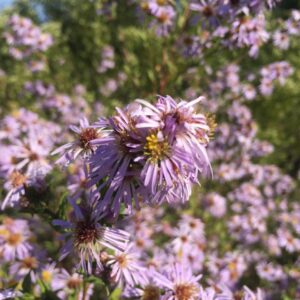$5.00 – $10.00
Description
The 4′- 6′ tall bushy white inflorescences rise above 2′ foliage every fall on this native grass. Larval host of Zabulon Skipper. Birds and small mammals feed on the seeds. The Xerces Society considers them especially important for native bees as they provide nesting structure and/or material. Many birds shelter and nest in the foliage. They harvest the foliage for nesting material as well. Deer do not feed on Maritime Bluestem making it a great deer baffle for tastier plants. Thrives in full sun in average to wet soil. Tolerates salt wind and periodic salt flooding.
Faunal Associations: Various insects feed on Broom Sedge. These insects include the leafhoppers Stirellus bicolor and Polyamia caperata, the piglet bugs Bruchomorpha dorsata and Bruchomorpha jocosa, the scale insect Aclerda andropogonis, the thrips Plesiothrips andropogoni and Eurythrips hindsi, the leaf beetles Chaetocnema denticulata and Myochrous denticollis, Sphenophorus destructor (Destructive Billbug), caterpillars of Hesperia metea (Cobweb Skipper), and Dissosteira carolina (Carolina Grasshopper). Because of the persistence of the dried-out foliage throughout the winter and into the summer of the following year, this bunchgrass provides shelter for various insects during the winter. It also provides cover and nesting habitat for the Bobwhite Quail, Greater Prairie Chicken, and other wildlife. Birds eating the seeds of Broom Sedge during the winter include the Slate-Colored Junco, Field Sparrow, and Tree Sparrow. The young foliage of this grass is palatable to cattle, deer, buffalo, and other hoofed mammalian herbivores, although older foliage declines in value as a source of forage.
Additional information
| Weight | 1.8 kg |
|---|---|
| Dimensions | 7 × 7 × 27 in |
| Size | 3.5" pot, 1 gallon |





